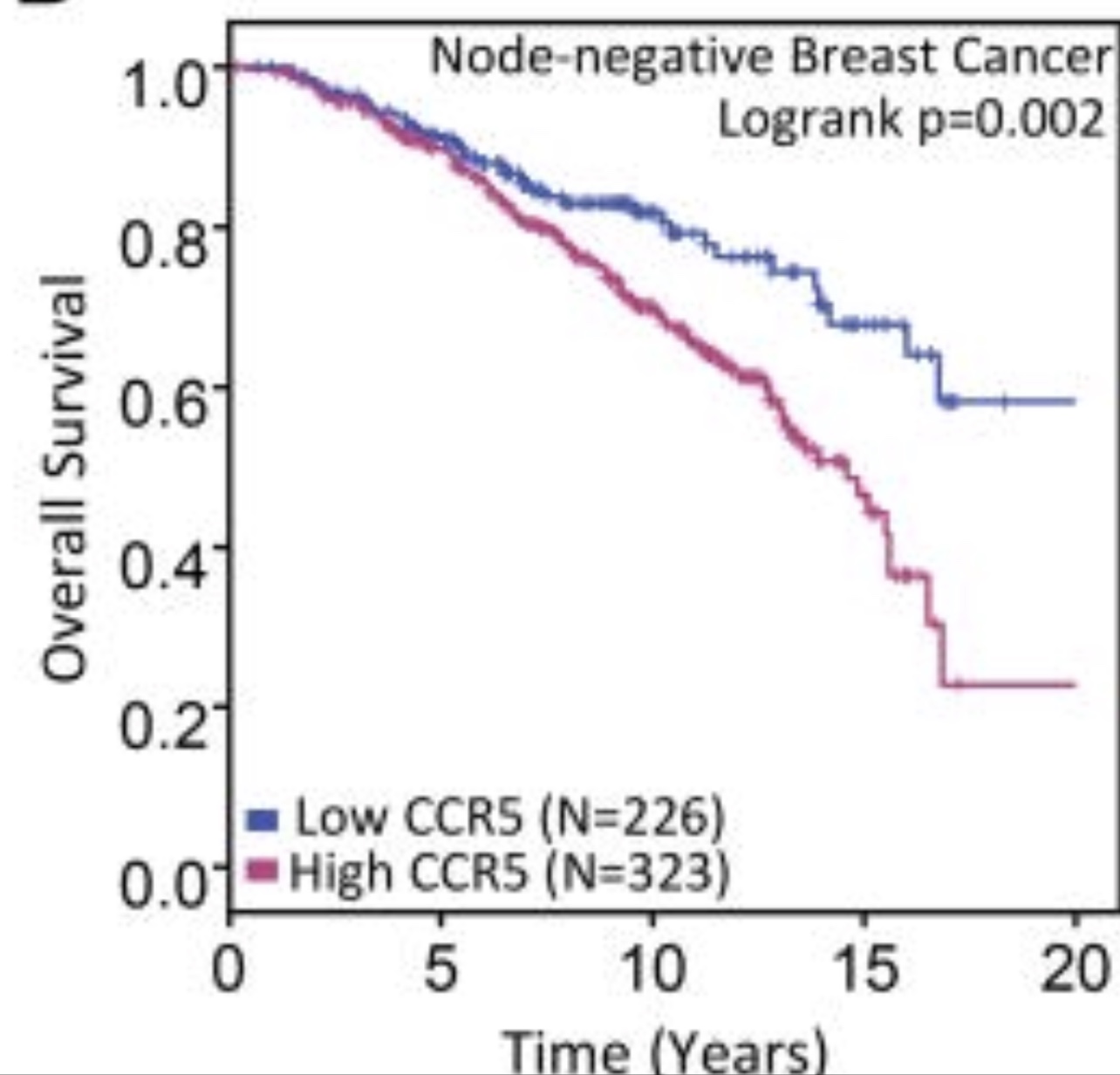Completely agree ohm20. That price will be much b
Post# of 158131
I read this article recently, and thought Ccr5 could play an even bigger than metastasis, it might play an additional role with recurrence. With some aggressive cancers, like tnbc, you see Ccr5 positive versus negative chart show a big difference in overall survival rate early, within a year. But some of the slower less metastatic ones, it showed up over years, like with node negative breast cancer, we start to see a difference after 5 years, and I wondered why the difference without metastasis. This below might explain that.

https://cdn.elifesciences.org/articles/43653/...653-v2.pdf
CCL5 promotes breast cancer recurrence through macrophage recruitment in residual tumors
Abstract
Over half of breast-cancer-related deaths are due to recurrence 5 or more years after initial diagnosis and treatment. This latency suggests that a population of residual tumor cells can survive treatment and persist in a dormant state for many years. The role of the microenvironment in regulating the survival and proliferation of residual cells following therapy remains unexplored. Using a conditional mouse model for Her2-driven breast cancer, we identify interactions between residual tumor cells and their microenvironment as critical for promoting tumor recurrence. Her2 downregulation leads to an inflammatory program driven by TNFα/NFκB signaling, which promotes immune cell infiltration in regressing and residual tumors. The cytokine CCL5 is elevated following Her2 downregulation and remains high in residual tumors. CCL5 promotes tumor recurrence by recruiting CCR5-expressing macrophages, which may contribute to collagen deposition in residual tumors. Blocking this TNFα-CCL5-macrophage axis may be efficacious in preventing breast cancer recurrence.
 (1)
(1) (0)
(0)